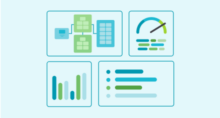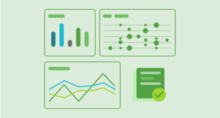Stakeholder Analysis: One (Critical) Mistake Almost Everyone Makes

Here at Simply Stakeholders we work with stakeholder engagement teams across many business sectors, government agencies and not-for-profit organisations. Some have mature stakeholder management processes in place, and many are just getting started with more formalized stakeholder analysis and interaction tracking.
However, one common trend we’ve noticed is that almost every one of them has a critical flaw in their approach to stakeholder analysis.
Before we get into that, let’s take a quick look at the role and purpose of analyzing stakeholders.
What is Stakeholder Analysis?
The structured process of identifying, categorizing, grouping and prioritizing stakeholders is known as stakeholder analysis.
Stakeholders are the internal and external people and organisations who can influence or are affected by your work or project. So your stakeholder list could include government, regulatory bodies, elected representatives, industry groups, not for profit organisations, community or special interest groups, the general public, employees, suppliers, and shareholders. (If you’re just getting started with Stakeholder Management read our guide on getting started with stakeholder management.)
Stakeholder analysis helps you identify, categorize and understand your stakeholders – their needs and expectations; their connections with other stakeholders; the risks and opportunities they pose for your work; and how you can best reach and engage them.
Just as you wouldn’t start a major renewable energy project, or change management program without a project plan in place, you also need to actively plan your stakeholder engagement. Creating a stakeholder management plan is the first step for any team looking to track and improve their stakeholder relationships. Stakeholder analysis is the foundation of a stakeholder management plan and a key part of project management.
Benefits of Stakeholder Analysis
Without robust stakeholder analysis you’d be operating in the dark. With limited visibility over who you should be engaging with or if your efforts are having any impact with stakeholders who are going to be critical to your success. A scattergun approach to stakeholder engagement is never going to be efficient or deliver the best outcomes for your work or project. So it is worth the investment of time to conduct a robust analysis of your stakeholders. Whether you’re using a spreadsheet or a stakeholder management system like Simply Stakeholders, stakeholder analysis should be done every time you add a stakeholder to your project. This helps ensure that stakeholder analysis is something your team will do on an ongoing basis, not as a ‘set and forget’ exercise.
Benefits of stakeholder analysis include:
- A robust framework analysis of stakeholders will help identify gaps in your stakeholder lists. Sometimes it is the missing voices that can make or break a project’s social acceptance and your social license to operate. Gaps in your stakeholder lists you could cause you to miss identifying and proactively managing some of the risks your project or work faces, for example.
- Relationships with stakeholders can be complex and multi-dimensional (and one of the key reasons why it’s hard to manage your stakeholder engagement program in a sales focused CRM system, see more on the difference between a CRM vs SRM). Being able to understand the relationship in all it’s complexity gives you the ability to have a more nuanced and personalised approach in your interactions with stakeholders.
- Large stakeholder engagement programs usually have large groups of stakeholders. And it can be difficult to identify who is critical to success, track the strength of the relationship, and key issues and sentiment. This is why stakeholder mapping is such an important aspect of stakeholder analysis. It gives you a framework for identifying strategically important stakeholders. There are a number of models for stakeholder mapping including power interest grids, salience model, mapping stakeholders by interest and influence, for example. (We cover this topic in more detail in this webinar on Stakeholder Mapping)
- Once you’ve identified your stakeholders and analyzed their needs, expectations and role in your process or work, you can create a highly targeted stakeholder strategy and communication plan. A strategic approach to stakeholder engagement will not only save you time and effort, it will make a significant difference to your project outcomes and success.
That One Critical Mistake…
So now that we’ve established what stakeholder analysis is and it’s importance in your stakeholder relationship management and engagement plans, let’s take a look at some trends we’ve noticed right across the industry.
Trends
- Stakeholder analysis or stakeholder mapping is usually done at the start of a project or process (ofcourse there’s nothing wrong with this!)
- It is often done by consultants. This is also not necessarily a problem, especially if the stakeholder mapping process involves stakeholders themselves and/or references previous work the organisation has done with the stakeholders.
- The power-interest grid is one of the most commonly used frameworks for stakeholder mapping. (There are a number of problems with the commonly used stakeholder mapping methods, but we will discuss these in another post. Sign up for our updates or stay tuned for another post that unpicks some of the problems with stakeholder mapping models.)
The Critical Flaw
Above all, the most critical problem we see with most organisations is that they just don’t use the stakeholder analysis insights. They don’t have a process or system for using that information in their engagement programs or reporting. As a result, the carefully prepared analysis tends to sit in a stakeholder management plan and is rarely, if ever, referred to or used. It’s not used in regular reporting, in evaluation of effectiveness of the engagement methods, or to revise the stakeholder management strategy. Despite offering so much insight and potential it is rarely used to inform decisions.
Find out more
Does this ring true for how your organisation currently manages stakeholder analysis? If you’d like to learn more about how we help organisations overcome this challenge with Simply Stakeholders, get in touch. Ask to speak to one of our stakeholder engagement specialists or book in a demo.



































